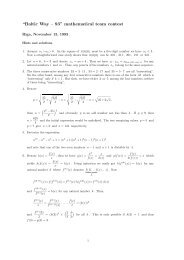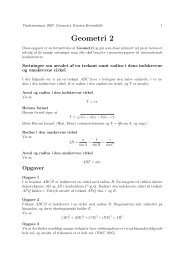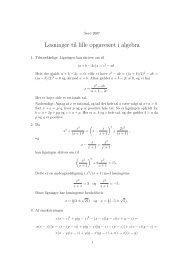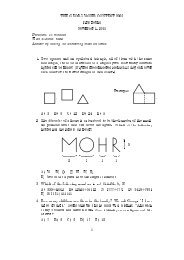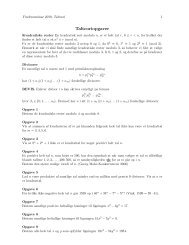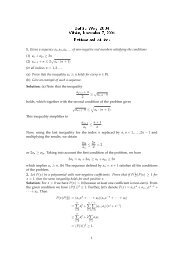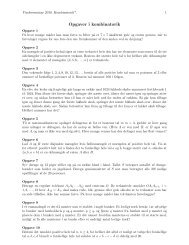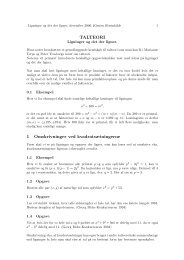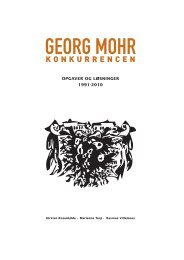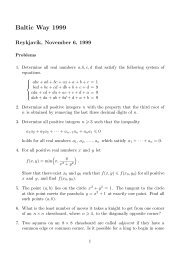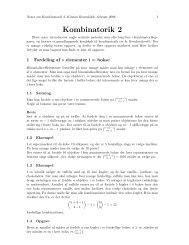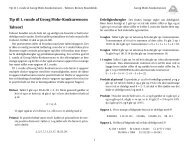Create successful ePaper yourself
Turn your PDF publications into a flip-book with our unique Google optimized e-Paper software.
Indeed: suppose there is no such player. If the teams consist of m and<br />
n members then the players of the first team jointly won less than m · n<br />
2<br />
games, and the players of the second team jointly won less than m · n<br />
2<br />
games — this is a contradiction since the total number of games played is<br />
mn, and in each game there must have been a winner.<br />
Returning to the original problem (with two equal teams of size 1000),<br />
choose a player who won his games with at least half of the members of<br />
the other team — such a player exists, according to the observation above,<br />
and we shall call his team “first” and the other team “second” in the sequel.<br />
Mark this player with a white hat and remove from further consideration<br />
all those players of the second team who lost their games to him. Applying<br />
the same observation to the first team (complete) and the second team<br />
truncated as explained above, we again find a player (in the first or in the<br />
second team) who won with at least half of the other team members. Mark<br />
him with a white hat, too, and remove the players who lost to him from<br />
further consideration.<br />
We repeat this procedure until there are no players left in one of the teams;<br />
say, in team Y . This means that the white-hatted players of team X<br />
constitute a group with the required property (every member of team Y<br />
has lost his game to at least one player from that group). Each time when a<br />
player of team X was receiving a white hat, the size of team Y was reduced<br />
at least by half; and since initially the size was a number less than 2 10 , this<br />
could not happen more than ten times.<br />
Hence the white-hatted group from team X consists of not more than ten<br />
players. If there are fewer than ten, round the group up to ten with any<br />
players.<br />
20. Answer: 1.<br />
Let 1 � g < h < i < j � n be fixed integers. Consider all n-digit numbers<br />
a = a1a2 . . . an with all digits non-zero, such that ag = 1, ah = 9, ai = 9,<br />
aj = 8 and this quadruple 1998 is the leftmost one in a; that is,<br />
⎧<br />
al �= 1<br />
⎪⎨<br />
al �= 9<br />
if l < g ;<br />
if g < l < h ;<br />
al ⎪⎩<br />
�= 9<br />
al �= 8<br />
if h < l < i ;<br />
if i < l < j .<br />
17




